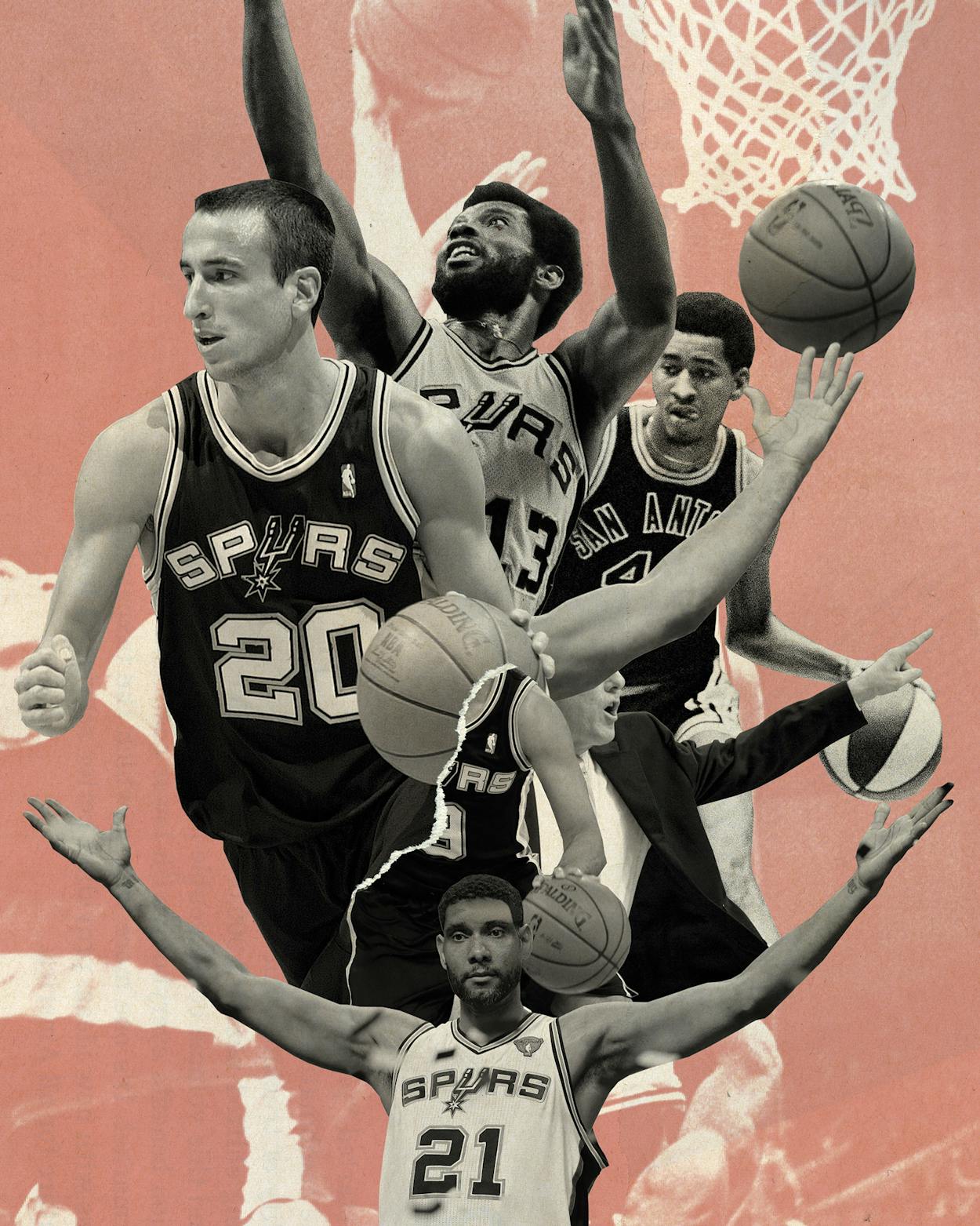Pro basketball in Texas was a wasteland in 1973. The Rockets, who had moved to Houston from San Diego two years earlier, won a mere 33 games—16 fewer than they lost. The only other pro team was the sad-sack Dallas Chaparrals, who were part of the upstart American Basketball Association. Their mediocrity on the court was matched by the indifference of spectators; oftentimes, just a few hundred showed up. Hoping to expand the fan base, the team had changed its name in 1970 to the Texas Chaparrals and scheduled games in Fort Worth and Lubbock. That didn’t help, and a year later it went back to its old name and its old stomping grounds—though not for long. When the Chaps played their final game in 1973, finishing the season with a dismal 28–56 record, 134 fans came to say goodbye.
The Chaps’ dispirited owners sold the team to a group of San Antonio businessmen led by the car dealership magnate Red McCombs. It wasn’t an auspicious beginning. San Antonio back then felt more like a big small town than a major metropolis, full of military retirees, working-class Mexican Americans, and an Alamo-obsessed tourist economy. The city had never had a major league sports franchise.
The team, renamed the Spurs, had one thing going for it. The ABA, which had launched in 1967, was willing to do whatever it could to attract fans, from instituting the three-point shot to encouraging an entertaining run-and-gun style that led to high-scoring games. The NBA, by contrast, was plodding; teams played predictable half-court basketball. The ABA was street ball played by men with massive Afros who raced down the court and flew above the rim. The league’s marquee player, Julius Erving, a.k.a. Dr. J, turned the slam dunk into a form of art. (The league would hold the first slam-dunk contest at the 1976 All-Star Game.)
Sports-starved San Antonians responded enthusiastically. The Spurs lost their first game, but almost six thousand curious spectators showed up that evening to the HemisFair Arena. Soon, nine thousand were coming to games—far surpassing the Houston Rockets’ average attendance. And the Spurs fans were rowdy—the Baseline Bums, led by an enthusiastic superfan named “Big George” Valle, yelled, drank a lot of beer, mercilessly taunted opposing players, and on at least one occasion got into physical altercations with them. The team’s small arena worked in its favor, amplifying all the fan noise.
Going to a Spurs game became a thing—especially in the second half of that first season, when the team signed future Hall of Famer George Gervin and went on to make the playoffs. “It’s just great to play for these people,” said guard Joe Hamilton, according to the website Remember the ABA. “They’re rooting for us all the time. Last year at Dallas, we’d have six hundred or seven hundred people at our games, and if we got something going, maybe a dozen of them would start yelling. The rest of them just sat there.”
In the team’s second year, with Gervin and James Silas leading the way, the Spurs were one of the most entertaining teams in pro basketball. Their attendance shot up 25 percent, and they hosted the 1975 ABA All-Star Game (where Willie Nelson sang the National Anthem a cappella). In their third season, they were 50–34 and more popular than ever. “People were scared to come in here and play us,” said Gervin. “If Big George and the Baseline Bums didn’t get ’em, we’d run ’em to death on the floor. I’ve never seen anything like it.”
But the ABA was struggling—four of the league’s twelve teams folded between 1972 and 1975—and even the Spurs’ die-hard supporters couldn’t keep the franchise going if there were only a handful of opponents to compete against. Salvation came in 1976, when the NBA agreed to merge with the ABA. San Antonio was brought in, along with the Denver Nuggets, Indiana Pacers, and New York Nets.
The ABA was no more, but its spirit lived on. The NBA adopted innovations such as the three-pointer and the slam-dunk contest and became the most entertaining league in sports. Professional basketball as we know it today is basically the version pioneered by the ABA. And no team embodies that spirit more than the Spurs, who hired one of the great nonconformist coaches of all time and drafted the most dominant power forward to ever play the game. Led by Gregg Popovich and Tim Duncan, the team won five championships from 1999 through 2014, becoming one of the defining sports franchises in American history.
Above all, the Spurs proved that Texans would watch pro basketball. The Dallas Mavericks debuted in 1980, eventually winning the hearts of locals. By the nineties, the Houston Rockets had finally gotten their act together, minting stars, winning championships, and cementing a fervent fan base. But it all started in San Antonio.
This article originally appeared in the February 2023 issue of Texas Monthly with the headline “Making Texas Safe for Basketball.” Subscribe today.
Image credits: Ginobili: Stephen Dunn/Getty; Duncan: David J. Phillip/AP; Gervin: Richard Drew/AP; Silas: AP; Popovich: Eric Gay/AP; Parker: Kathy Willens/AP, Kim Raff/AP
- More About:
- Sports
- Spurs
- Basketball
- San Antonio









